
Space
Month in Space Pictures: A fireball from beyond and a storm on Jupiter
A meteor streaks across the sky, a tiny satellite is set free, a final farewell from Saturn and more stellar images from November 2017.
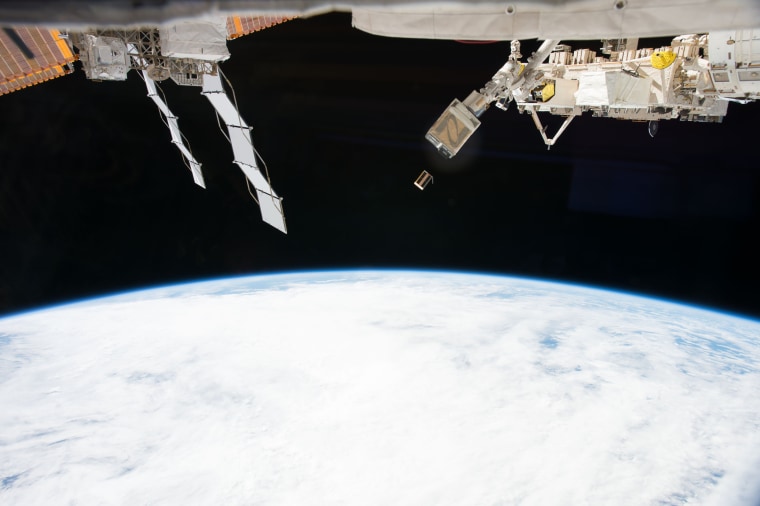
Bacteria in orbit
The EcAMSat, short for E. coli AntiMicrobial Satellite, is ejected from the the Kibo laboratory module of the International Space Station on Nov. 20.
The EcAMSat mission will investigate space microgravity effects on the antibiotic resistance of the bacterial pathogen E. coli.
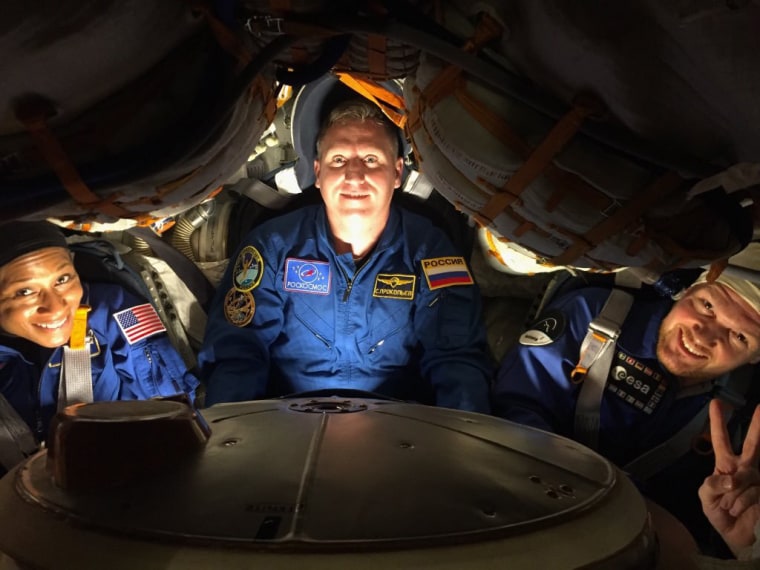
Tight fit
From left, NASA astronaut Jeanette Epps, cosmonaut Sergei Prokopyev and European Space Agency (ESA) astronaut Alexander Gerst sit in a Soyuz spacecraft during a "fit check" in Moscow on Nov. 9.
"Nothing like sitting in your own spaceship for the very first time," tweeted Gerst. "Love the 'new-spacecraft smell.'"
The crew will depart for the space station in 2018.

Parting shot
In a fitting farewell to the planet that had been its home for over 13 years, NASA's Cassini spacecraft took one last, lingering look at Saturn and its splendid rings during the final leg of its journey and snapped a series of images that has been assembled into a new mosaic.
Cassini's wide-angle camera acquired 42 red, green and blue images, covering the planet and its main rings from one end to the other, on Sept. 13, two days before its dramatic plunge into the planet's atmosphere. Imaging scientists stitched these frames together to make a natural color view which was released on Nov. 21.


Shooting Star
A football-sized meteor streaks across the sky above the village of La Villa in northern Italy on Nov. 14. The shooting star was seen by thousands of people in Germany, France, Switzerland, Austria and Luxembourg.
British photographer Ollie Taylor happened to be on a shoot in the Dolomites when he captured the fireball in motion.
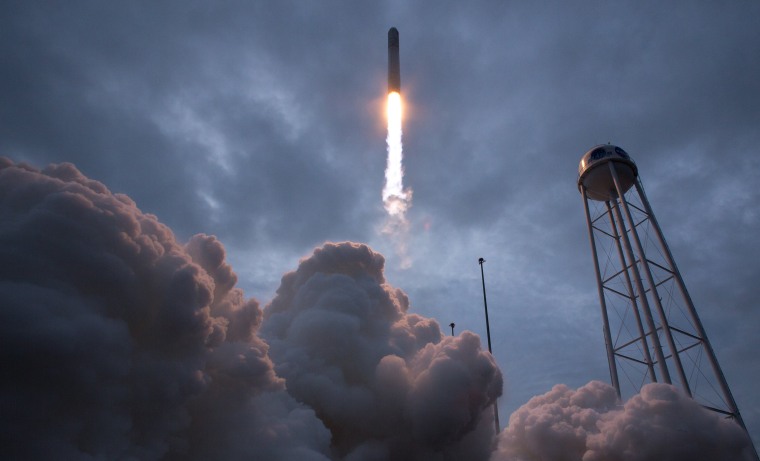
Departure...
The Orbital ATK Antares rocket, with the Cygnus spacecraft onboard, launches from NASA's Wallops Flight Facility in Virginia on Nov. 12.
The cargo resupply mission delivered approximately 7,400 pounds of science and research, crew supplies and vehicle hardware to the space station.
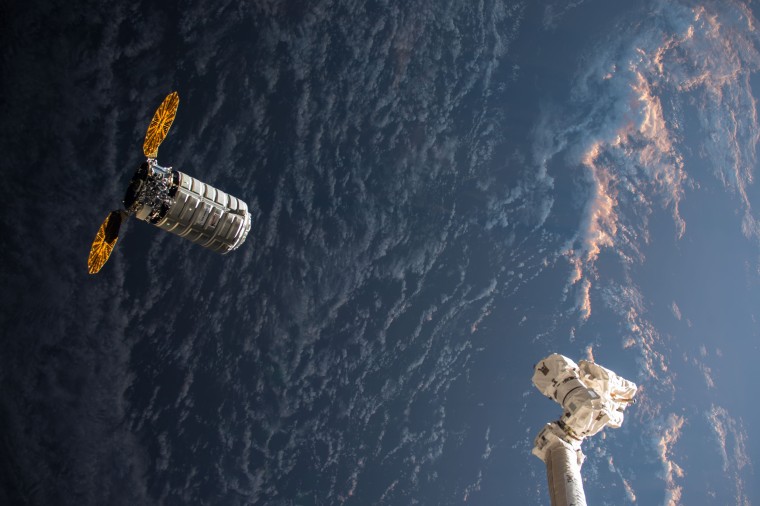
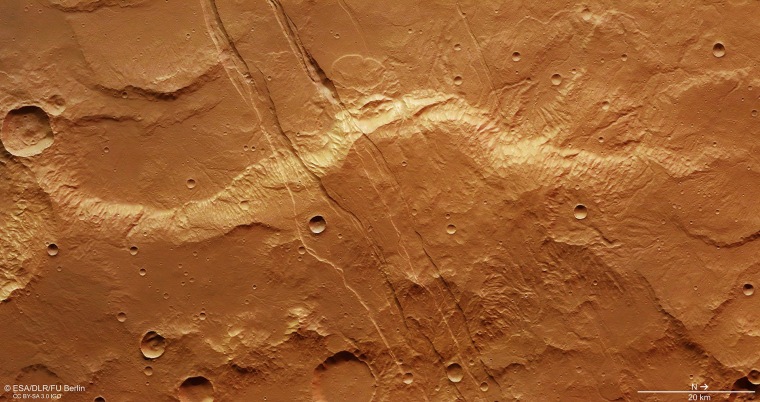
Martian landscape
This view of Sirenum Fossae fracture system on Mars, released on Nov. 16, was captured by the ESA's Mars Express orbiter. The features are associated with tectonic stresses linked to the volcanic activity of the region.
The Mars Express successfully entered Martian orbit in December 2003, six months after its launch.
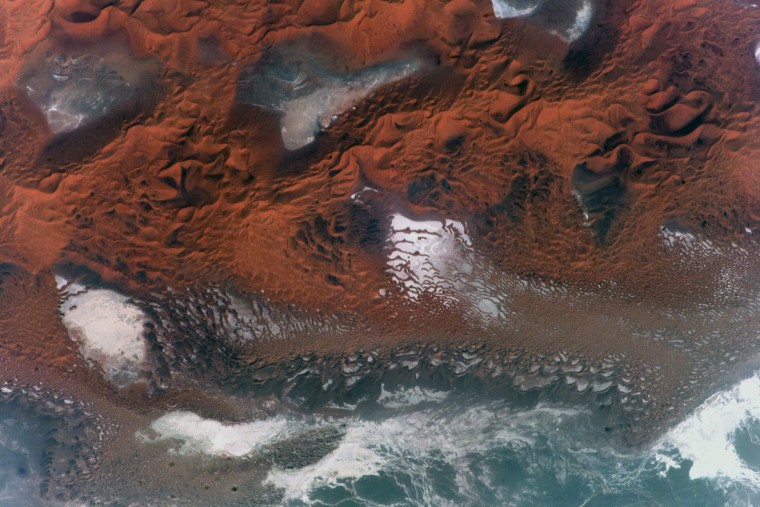

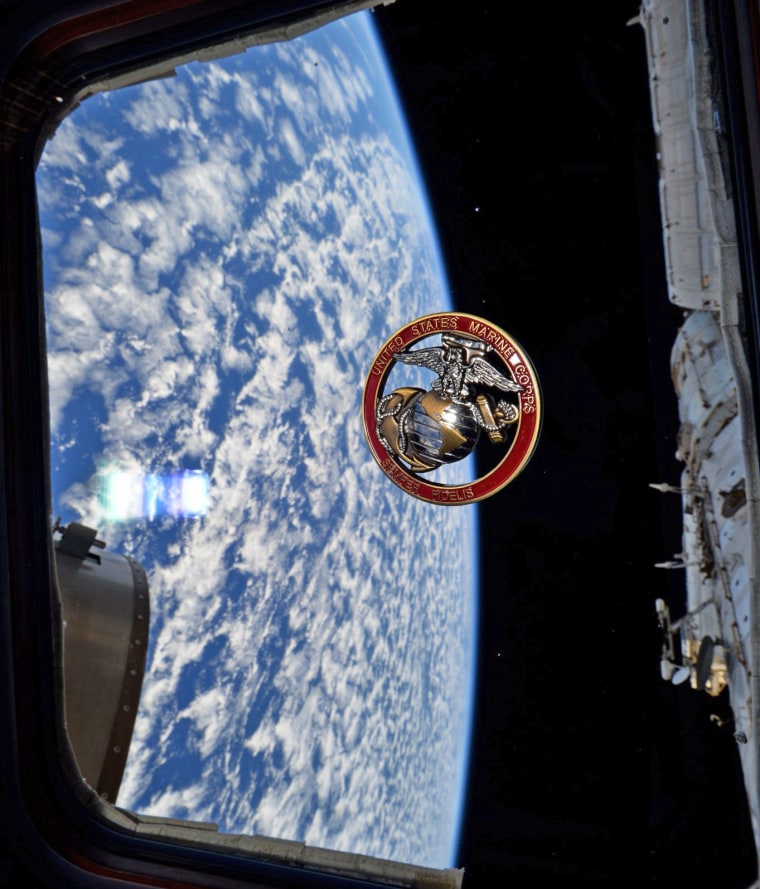
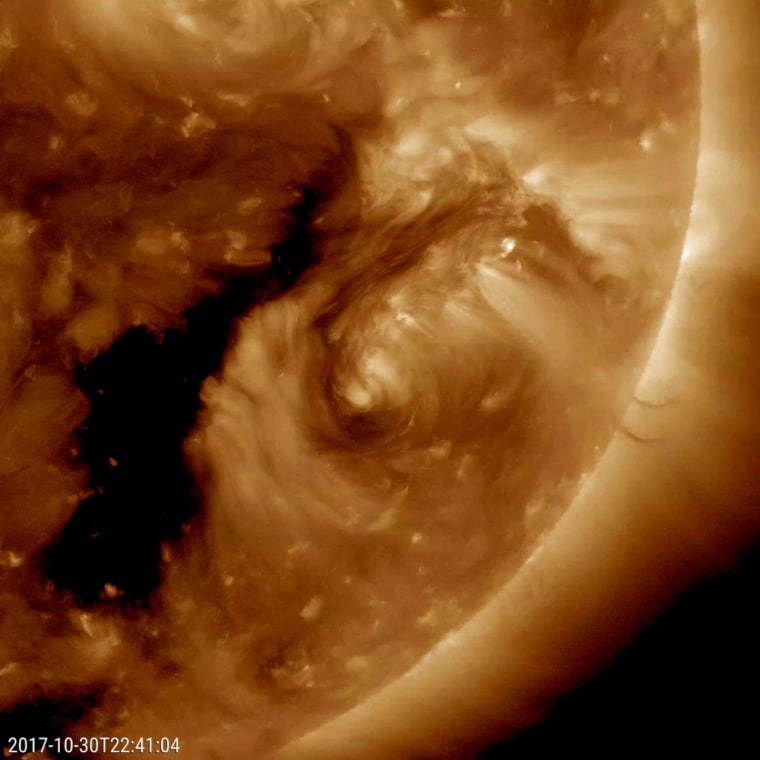
Encircling Filament
NASA's Solar Dynamics Observatory came across an oddity on Oct. 29-31 that the spacecraft has rarely observed before: a dark filament encircling an active region.
Solar filaments are clouds of charged particles that float above the sun, tethered to it by magnetic forces. They are usually elongated and uneven strands. Only a handful of times before have we seen one shaped like a circle. The black area to the left of the brighter active region is a coronal hole, a magnetically open region of the sun.
Image released on Nov. 8.
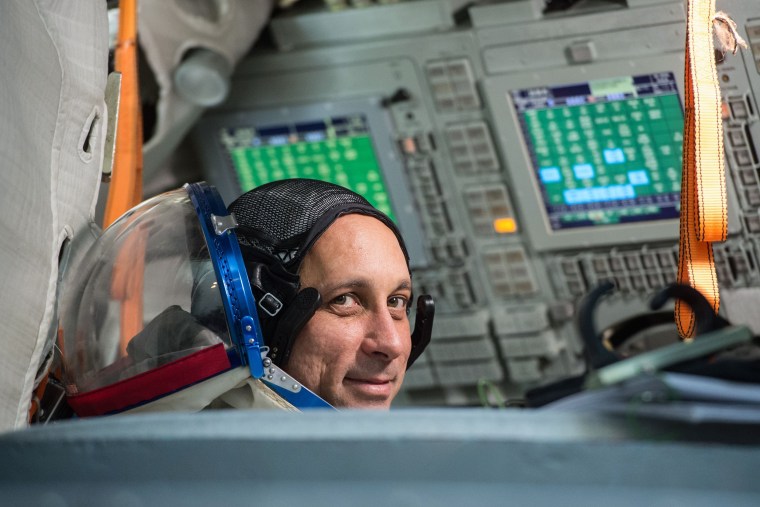
Taking the test
Cosmonaut Anton Shkaplerov attends his final exam at the Gagarin Cosmonauts' Training Centre in Star City, outside Moscow, on Nov. 29.
The test is one all space station crews must pass before they are cleared to launch.
Shkaplerov, who previously spent a year in orbit, will be taking another trip to the station in December.

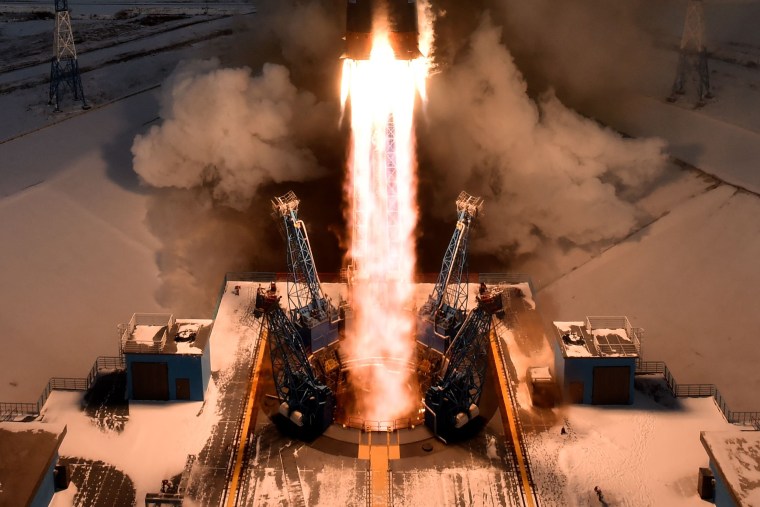
Liftoff
The Soyuz rocket carrying Russia's Meteor-M 2-1 weather satellite lifts off from the launch pad at the Vostochny Cosmodrome in Russia's Far East on Nov. 28.
The weather satellite and nearly 20 micro-satellites from various nations failed to enter their designated orbits following the launch, another blow to the nation's space program.
Russia's Roscosmos space agency said it's trying to determine what happened.

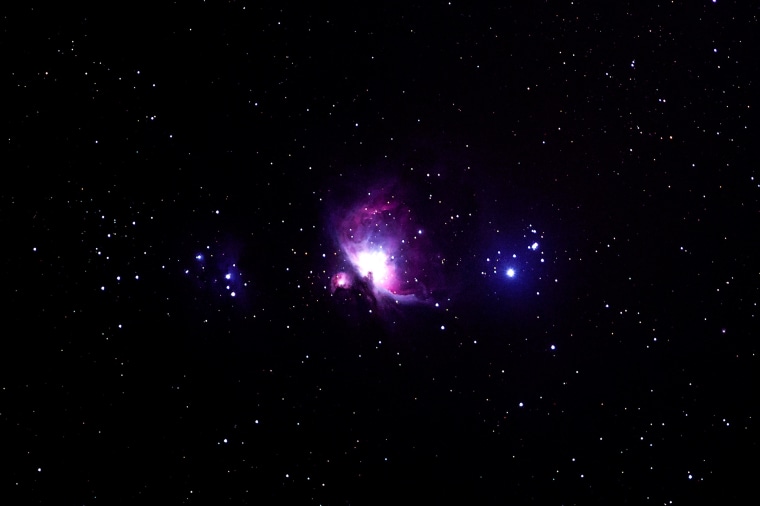
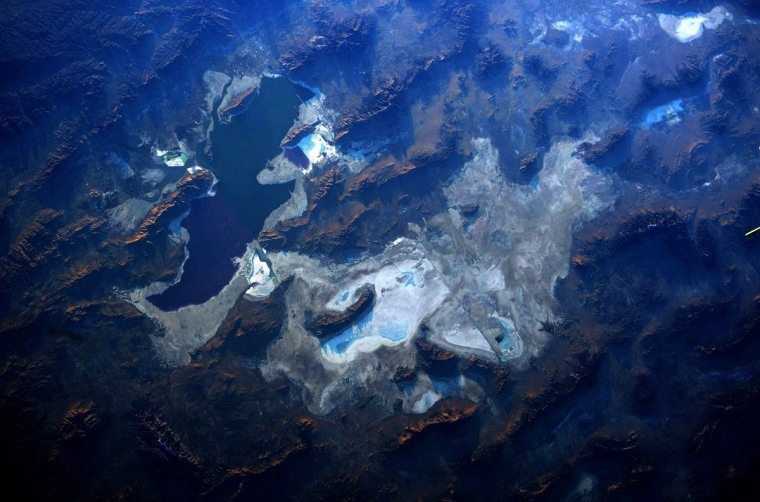
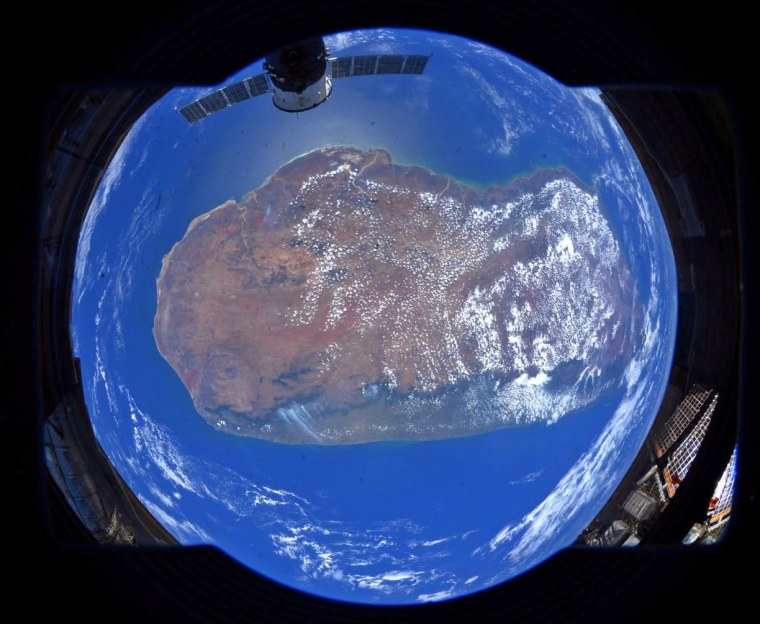
Wide view
Astronaut Randy Bresnik captured this image on Nov. 22 of Madagascar from the cupola, a seven-windowed dome on the space station that offers panoramic views of Earth.
October's best space pictures: Astronaut Halloween and a ghoulish sun